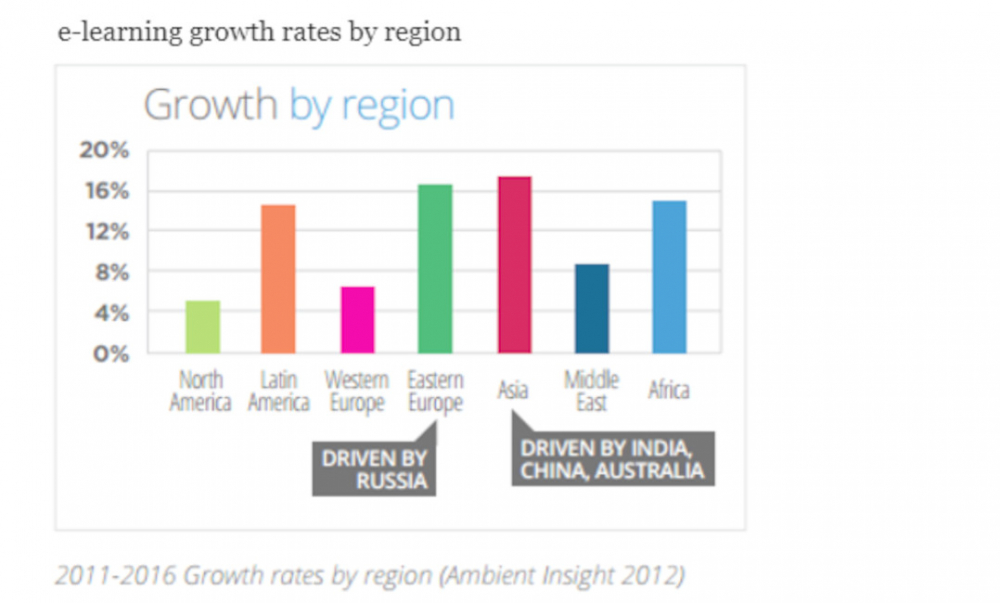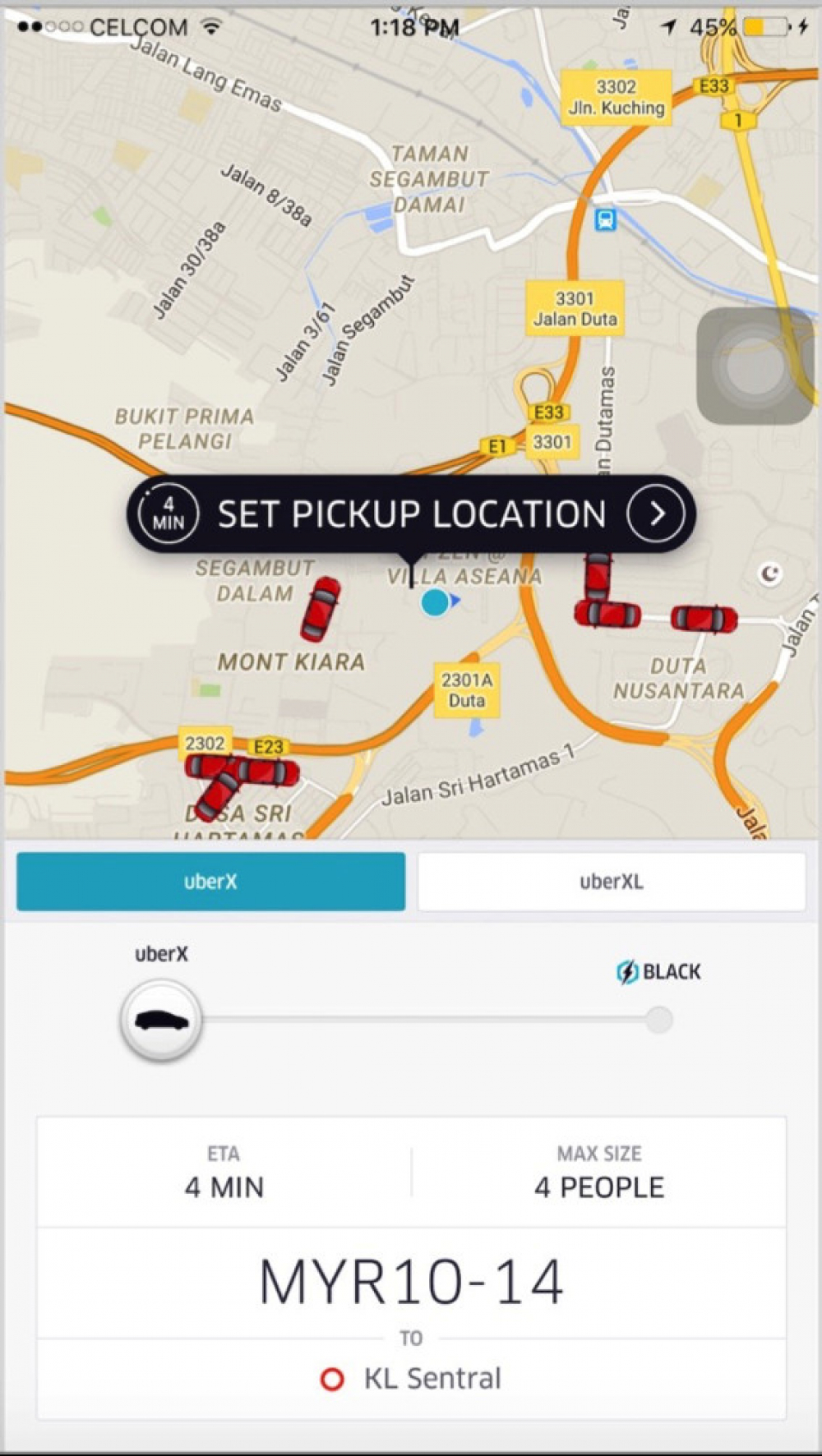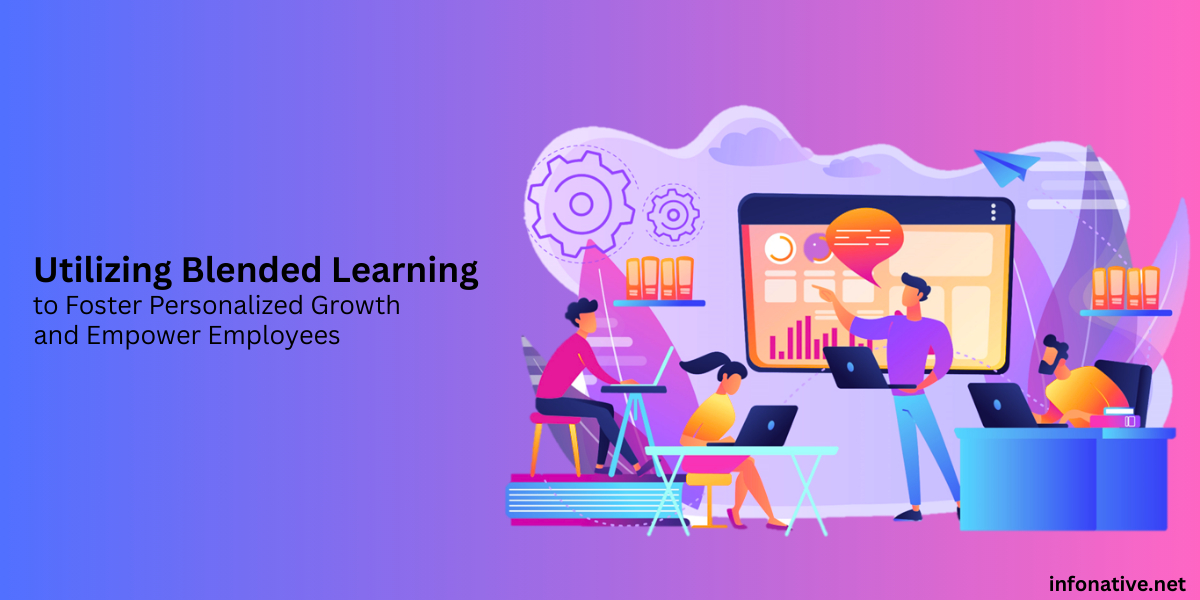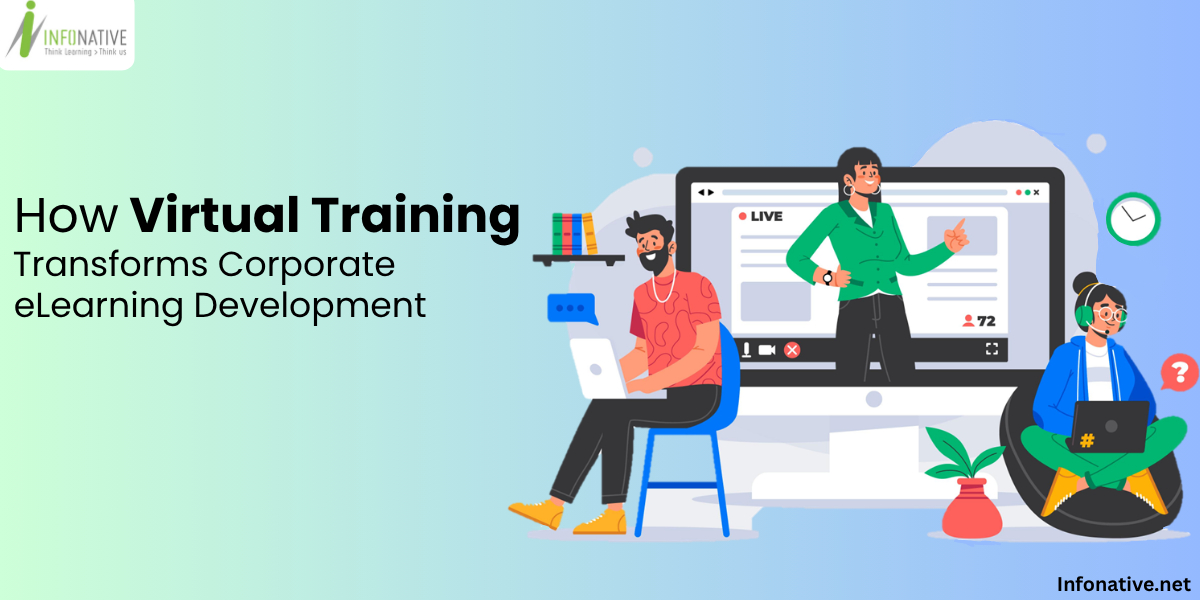“They always say time changes things, but you actually have to change them yourself —Andy Wharol"
The e-learning industry is growing leaps and bounds. Per the latest reports, the worldwide e-learning industry has surged to a valuation of $107 billion as of 2015. The chart below, clearly shows a healthy growth for e-learning across regions:

Between 2014 and 2019, it is anticipated that the e-learning industry will experience a compound annual growth rate (CAGR) of 15.06%.
As e-learning participants expand globally, the call for enhancing e-learning's engagement is on the rise. In many e-learning forms and communities, an unceasing grievance from users is that ‘E-learning is Boring’.
A statistic to support this statement — A survey was conducted by a leading e-learning firm in the UK, on the ‘effectiveness/impact of compliance training’ that they have been developing for different clients over the years.
A staggering 97% of participants said that they did not gain anything from the e-learning courses. They completed the training only because it was compulsory.
Therefore, a shift needs to happen from e-learning developed today in comparison to what is needed.
Here are 5 strategies that can be used to create e-learning that is not boring:
Make e-learning experience as simple as using UBER
Let’s first understand why UBER became so successful?
Earlier booking a cab to travel was an arduous process,
- You must contact the taxi stand or hotel reception and anticipate a wait of around 20 minutes for the taxi's arrival.
- Throughout the voyage, our concern often lingered on the safety of the driver and whether they were navigating us to our destination via the most efficient route.
- As the journey concludes, there's often a concern about whether to offer a tip to the driver or not, particularly if they might not have change to provide.
Now, UBER revamped it completely and there is a radical change in the entire customer engagement - As seen in the screenshot below, the interface is self-explanatory and overcomes all its earlier shortcomings:

- You just need to enter the pickup location and destination
- You get the rating of drivers
- You can see the route
- You possess the freedom to choose from a variety of cab options depending on your budget, ranging from standard to deluxe.
- Sharing ride information with family and friends is essential for ensuring safety and monitoring purposes.
- After the journey is over, you can straight away get out of the cab.
The e-learning experience has to be similar to the current UBER engagement – Simple, crisp, and intuitive. For example, in 2-3 minutes you can book a cab (time you open the mobile app and get a booking confirmation). Now when we see most of the e-learning courses after the first 5-10 minutes.... you are still stuck at the ‘Course Navigation’ or the ‘Course Objectives’ page. Suppose you're seeking particular information within a course. In such a situation, there's no absolute necessity to proceed through the entire course in a strictly linear manner.
An e-learning experience should not push the learners to follow a path.
Similar to the effective sales approach of "Preference for purchasing over being pitched," the navigation in e-learning should not impose itself on users. Instead, users ought to have the freedom to explore desired subjects and access them at their convenience.
To add one more point - forced navigation (where a learner cannot go to the next page until they completely view the current page) should be avoided. Flexibility is important for a learner to take up learning based on personal preferences and requirements.
Use Gamification beyond points, badges, and leaderboards
The concept of gamification has been around for a while. However, majority of the learning experience is limited to points, badges, and leaderboards (which is just the tip of the iceberg)
Check this TED talk on the other aspects of gamification that can be used:
Use Pareto Rule
Create e-learning for only 20% of the content that would have 80% of the impact.
Create Bite Size Learning
The e-learning page/frame should not have more than 3 minutes of seat time. The screen should not be idle for more than 5-10 seconds.
Create Device-Responsive, Any- time Any-where learning
As majority of the Websites are device responsive (size of the Website adjusts automatically based on the device used to view the Website), E-learning should be device responsive as well and e-learning should be accessible on any device (all tablets/desktop/smartphones) and any browser and should be able to work on 2G and 3G connections. This ensures that users don't have to be stuck to their desktops to view the e-learning.
I hope this information was helpful. If you have any questions, please feel free to contact me at saurabh.kathuria@infonativesolutions.com




